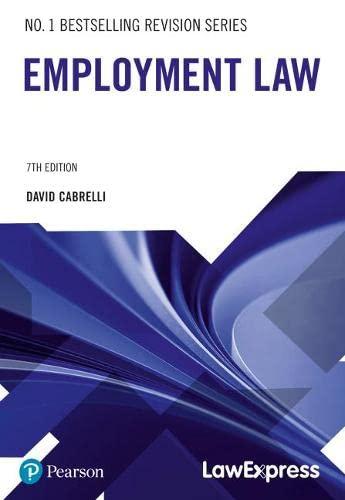Question
Due to the adverse effect of both negative and positive externalities on market efficiency, economists and policymakers strive to address the problem. The internalization of
Due to the adverse effect of both negative and positive externalities on market efficiency, economists and policymakers strive to address the problem. The "internalization" of the externalities is the process of adopting policies that would limit the effect of the externalities on unrelated parties. Generally, the internalization is achieved through government intervention.
21 In the chapter on diabetes you wrote that you should avoid tablets before age of 40 years in non-insulin-dependent diabetes mellitus (NIDDM). Why is this, because in our country most doctors are prescribing this?
22 1. Should a patient poorly controlled on glibenclamide 15 mg a day and metformin 1500 mg a day be moved onto insulin? 2. What are the indications for insulin in type 2 diabetics?
23 What happens to the insulin-secreting capacity of a type 2 diabetic placed on insulin therapy earlier than recommended? Can the external supply of insulin improve the functional capacity of the insulin-secreting cells, to some extent by providing some rest to these cells?
24 1. Is inhaled insulin a suitable substitute for injectable insulin? 2. Is there, or will there soon be, insulin in the form of a tablet?
25 What are the complications of insulin other than hypoglycaemia and injection?
26 I would like to know the processes that go into administering the Alberti's/modified Alberti's regime in patients with uncontrolled diabetes mellitus.
27 Is there any role for steroids in the management of resistant diabetes mellitus (daily insulin requirement exceeding 100 units/day)? Don't they make glycaemic control worse?
28 What is the importance of potassium chloride (KCl) in the treatment of a diabetic patient (pre-operative care)? The formula in the text is explained as 16 U of insulin 10 mmol of KCl 500 mL 10% glucose.
29 What is the cut-off point of daily albumin excretion above which a diabetic patient without hypertension should be given an angiotensinconverting enzyme (ACE) inhibitor?
30 What is the urinary concentration or 24-hour urine albumin content above which angiotensin-converting enzyme (ACE) inhibitors should be started in diabetic patients? Does an albumin (in microgram)/creatinine (in milligrams) ratio above 30 in the morning sample indicate a need for this?
Step by Step Solution
There are 3 Steps involved in it
Step: 1

Get Instant Access to Expert-Tailored Solutions
See step-by-step solutions with expert insights and AI powered tools for academic success
Step: 2

Step: 3

Ace Your Homework with AI
Get the answers you need in no time with our AI-driven, step-by-step assistance
Get Started


